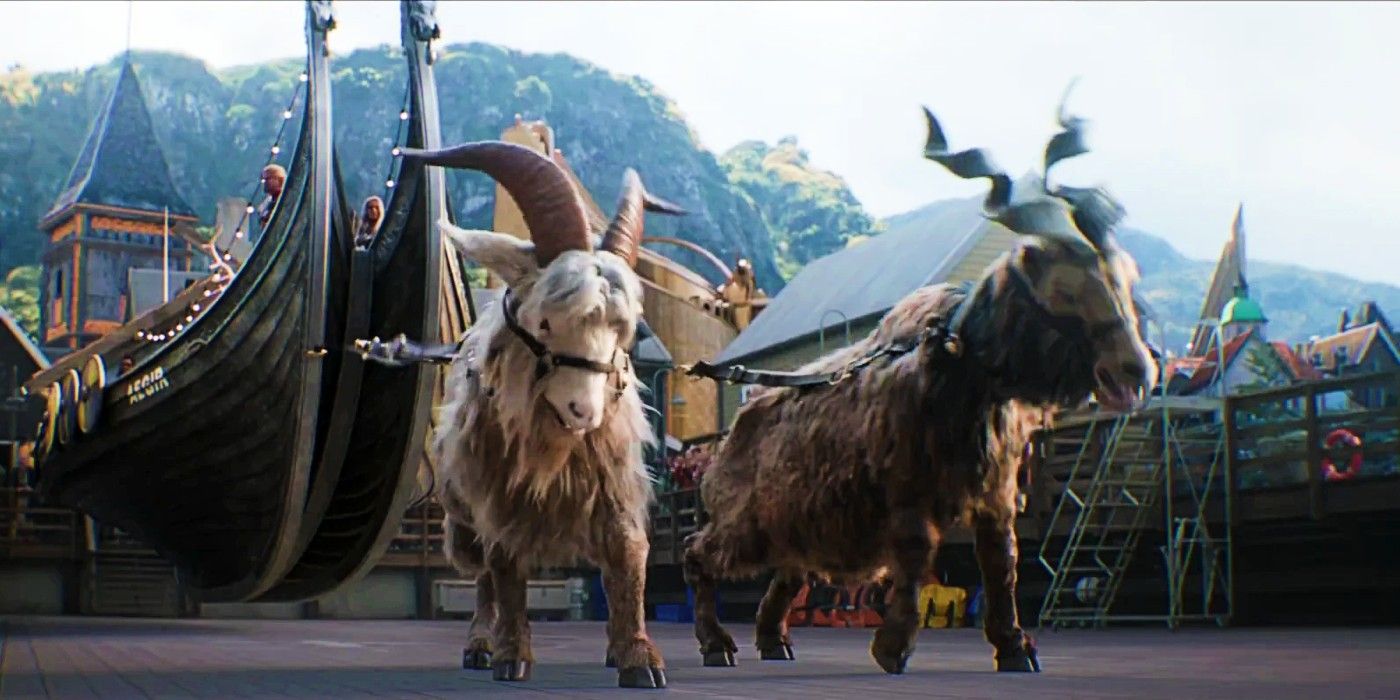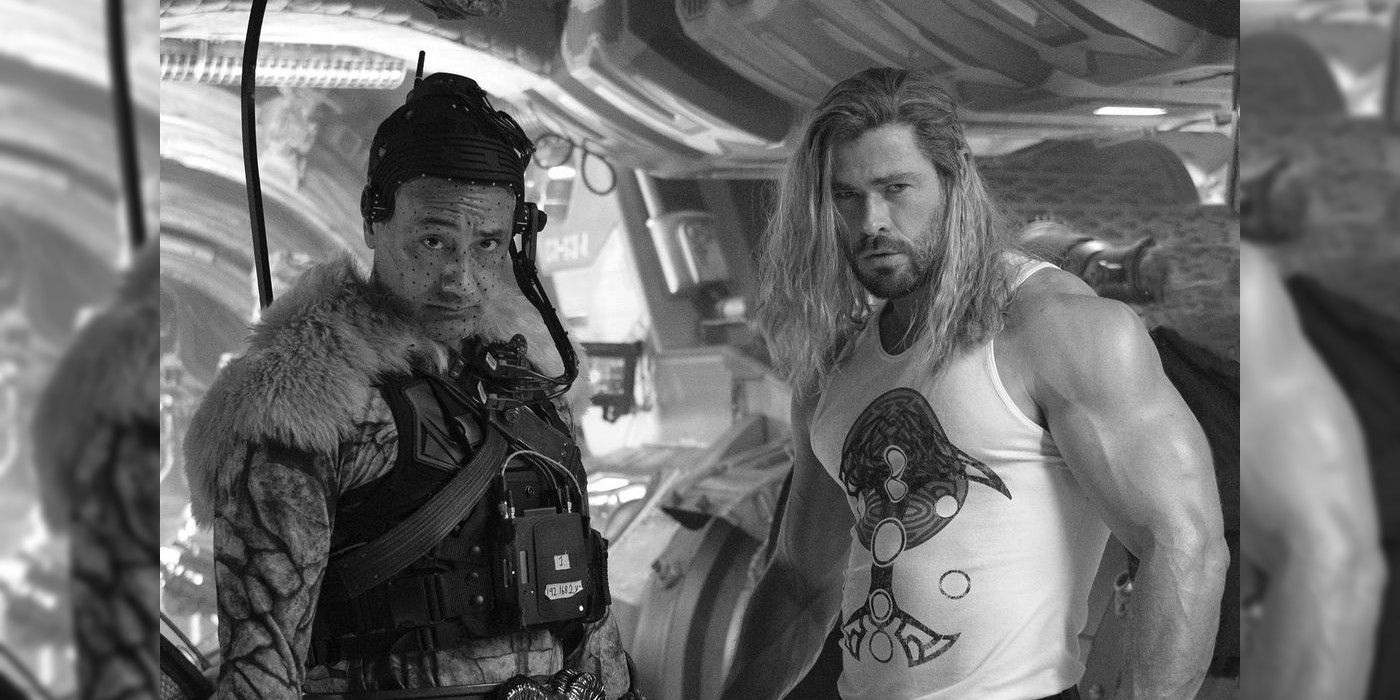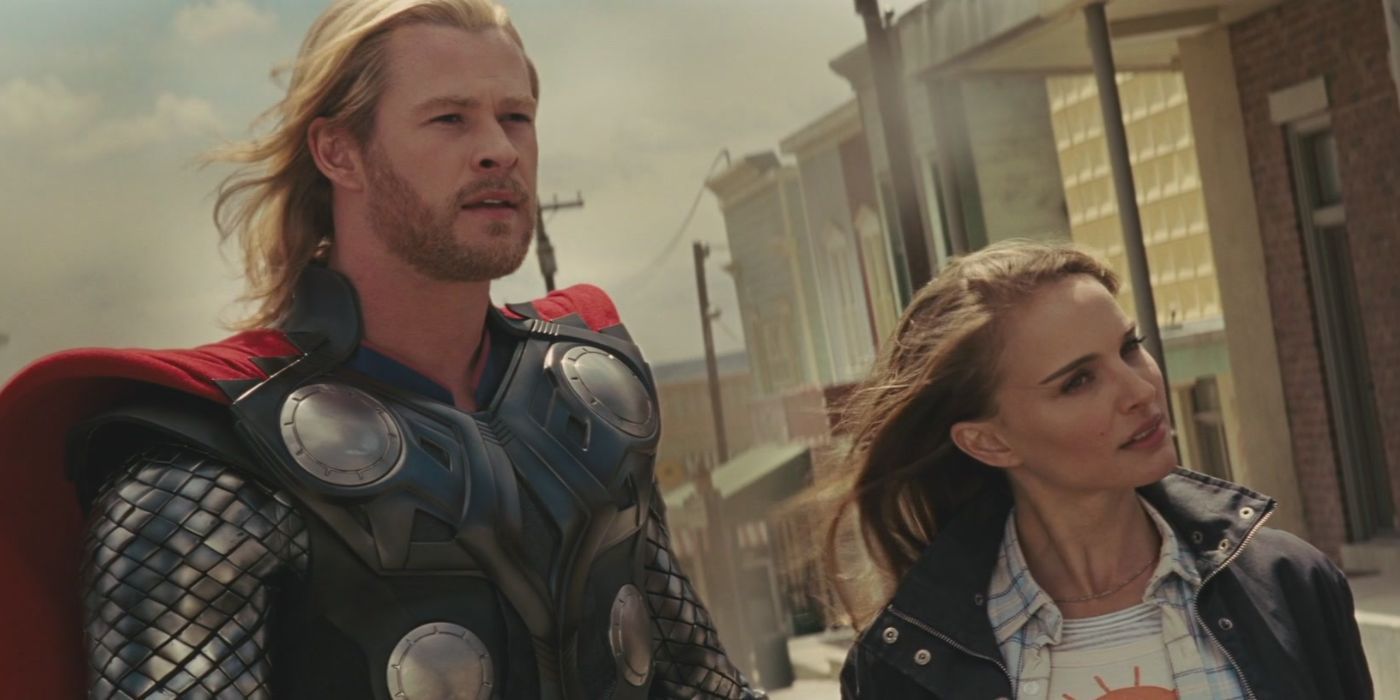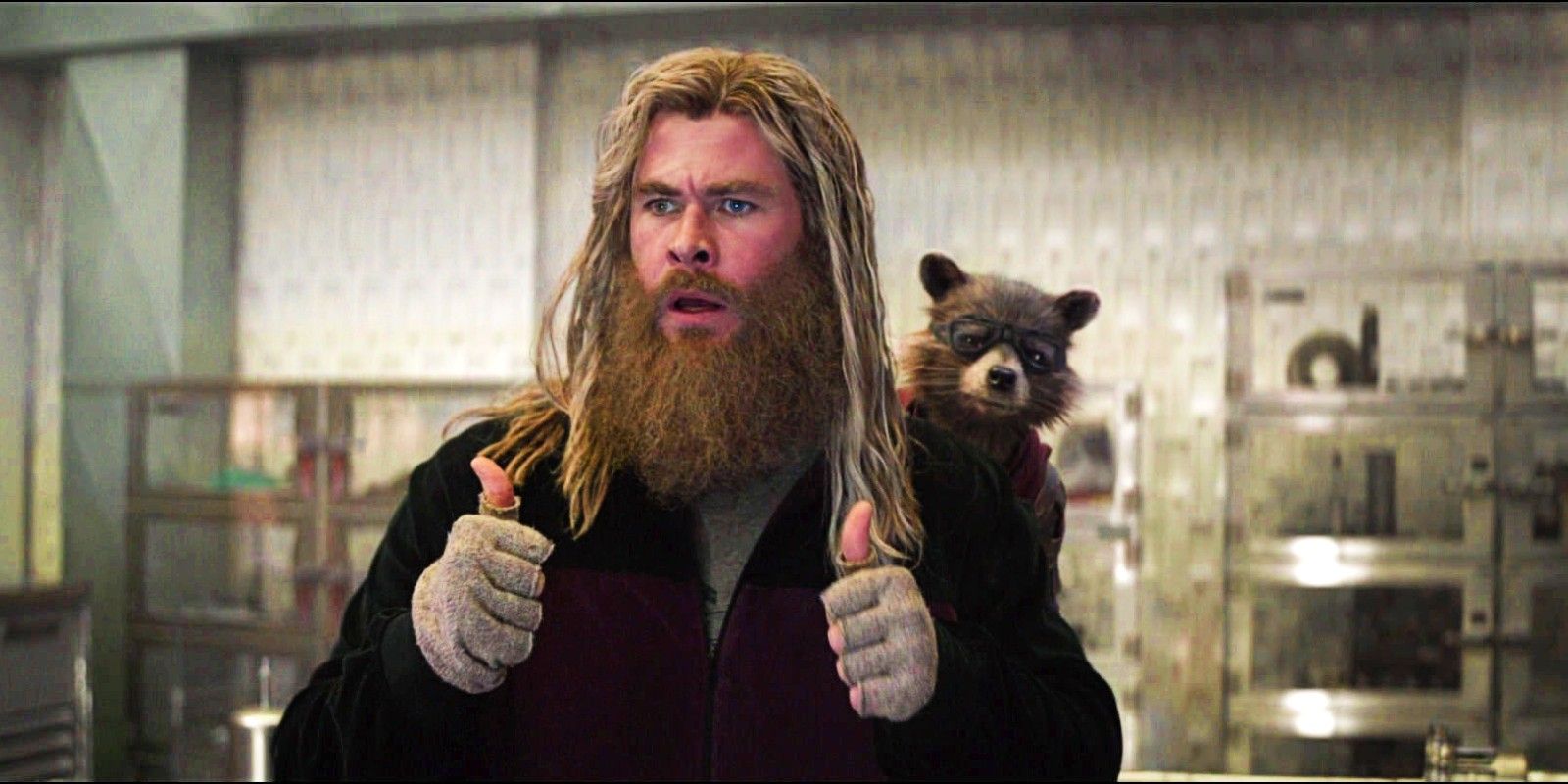Thor Ragnarok Continues From What Movie
Chris Hemsworth's Thor is the only original MCU Avenger to get a fourth solo film,Thor: Love and Thunder, proving that the studio wasn't ready for him until 2017's Thor: Ragnarok . With the return of Taika Waititi as director, it's clear that Marvel Studios have finally found their winning formula for their Thor movies after some false starts. The hugely positive response to Waititi's looser, goofier take on the Norse God of Thunder revitalized the character. This new Thor continued into the final twoAvengersmovies and showed there was a lot more to explore with the character, whereas both Tony Stark and Steve Rogers' character arcs had reached a clear endpoint by the conclusion of Avengers: Endgame.
The success of Ragnarokand Thor's subsequent appearances in Avengers: Infinity War and Endgame were reflective of an MCU trend towards the pleasing mixture of cosmic high concepts and irreverent humor that started with James Gunn's Guardians of the Galaxy. It's therefore unsurprising that Thor was teamed up with Peter Quill and co during Infinity War. As Marvel continues to expand on this mixture of the cosmic and comic in the likes of Ms. Marvel and Shang-Chi and the Legend of the Ten Rings, the character of Thor feels more at home in the current MCU than he did in its first two phases.
Thor: Love and Thunder will expand this tone of cosmic comedy even further, with Thor embarking on an intergalactic and multi-dimensional odyssey of self-discovery. He'll reunite with his former girlfriend and new God of Thunder, Jane Foster (Natalie Portman), to battle the terrifying Gorr, the God Butcher (Christian Bale.) As ominous as that sounds, it's clear from the trailer that there will be a rich vein of humor, with a comedy Chris Hemsworth nude scene, in front of Russell Crowe's Zeus. It will also introduce more of the stranger, goofier elements of the Thor comics, such as his beloved mystical goats Tanngrisnir and Tanngnjóstr, who will finally make their MCU debut.
Marvel Rejected Some Of Thor's Weirder Elements In 2009

Tanngrisnir and Tanngnjóstr were originally pitched to Marvel Studios President Kevin Feige back in 2009, who rejected Thor's goat chariot because, as Thor co-writer Zack Stentz observes, "a space Viking with a magic hammer was a hard sell back in 2009." Throwing in a magical goat chariot was deemed to be a step too far for the movie, 13 years later and Feige clearly has no such qualms about magic goats. It's a testament to the creative work of filmmakers like Taika Waititi and James Gunn that the MCU is now in a position to sell these more outlandish ideas to mainstream audiences.
How Taika Waititi Changed Thor Movies

As the director of the tender adventure comedy-drama Hunt For The Wilderpeople and vampire comedy What We Do In The Shadows, Taika Waititi was ideal for helming the Thor movies into the realm of fantasy comedy. As with his previous movies, Waititi brought a more improvisational element to Thor: Ragnarok, which was no mean feat for an effects-heavy blockbuster. However, it gave Ragnarok a far looser and more accessible tone that made Thor feel like a real person. In particular, the scenes between Thor and Bruce Banner (Mark Ruffalo) neatly dispensed with Odinson's royal lineage and presented audiences with two "friends from work" discussing a solution to their predicament.
This new version of Thor carried over into Avengers: Infinity War and Avengers: Endgame, but the post-snap Fat Thor version of the character sparked criticism over how it made a joke out of mental health issues. Playing Thor's loss and grief mostly for laughs in Endgame proved what the character is missing without Taika Waititi. Taika Waititi's movies are very rarely glib, and he's always good at balancing comedy with pathos. He would have made Fat Thor both funny and tragic in equal measure, having successfully made Boy and Hunt For The Wilderpeople, both comedy movies that are also about grief and abandonment.
Just as Thor: Ragnarok was about the God of Thunder assuming his place on Asgard's throne under his own terms, the movie itself represented a similar shift. Rather than getting bogged down in the heavy exposition and dry theatrical dialog of Thor's Asgardian society, Ragnarok has fun exploring these other realms. It was also a visually stunning movie that evoked the psychedelic work of Marvel legend, andThorco-creator Jack Kirby. This dazzling visual style, combined with the looser dialog and comic set-pieces made Waititi's Thor: Ragnarok feel like a breath of fresh air after Thor's previous drab-looking and overly earnest MCU appearances.
Why It Took Marvel So Long To Get Thor Right

Released in 2011, the MCU's first Thor movie, directed by Kenneth Branagh, saw the Norse God of Thunder stranded in New Mexico after being exiled from Asgard. The plot of a Norse god on the streets of modern-day New Mexico had a lot of potential for high-concept culture-clash comedy that was never fully realized in the finished movie. The choice of Shakespeare aficionado Branagh as a director is further evidence of Thor's tonal issues. The Asgard ofThorandThe Avengers was a place of Shakespearian-style court intrigue as both Thor and Loki vied for Odin's throne, a storyline that never sat comfortably alongside the blockbuster action sequences taking place down on Earth.
This only got worse in Thor: The Dark World, which doubled down on the Asgard mythology of its predecessor, making it an even more serious movie as a result. It was clear that Marvel Studios were unsure what to do with the God of Thunder in the more realistic world they'd created for the MCU. This struggle is reflected in Zack Stentz's belief that "selling a space Viking with a magic hammer was hard in 2009." During these meetings about the first Thor, the big superhero movie was Christopher Nolan's The Dark Knight, a dark, gritty, realistic take on the character that dispensed with the comic book excesses of some earlier Batman movies. It's unsurprising that Kevin Feige and his colleagues believed that there wasn't an appetite for a space viking's outlandish cosmic odyssey.
This 2000's trend of comic book movies that were slightly embarrassed to look like comic book movies is likely why the MCU's Phase 1 was heavily influenced by Mark Millar's 2002 Ultimates comic series. That series was lauded for grounding the Marvel universe in a more recognizable real-world setting. The Thor of Millar's more realistic Earth-1610 was a psychiatric nurse called Thorlief Golmen, who began experiencing strange visions of Asgard shortly after his 30th birthday. Given that Samuel L. Jackson's Nick Fury is ripped straight from those pages, it's strange that the MCU didn't go in the Golmen direction for the first two Thor movies. Instead, they aimed somewhere between the more grounded version of Millar's Thorlief Golmen and Jack Kirby's psychedelic interpretation of Norse mythology. It was a bet-hedging approach that created two tonally muddled movies that never satisfyingly got Thor right until other Marvel movies began opening up the Marvel Cinematic Universe beyond the narrow parameters of its real-world grounding.
How Marvel's Thor Changes Fit With The MCU's Increasing Weirdness

There are two elements that likely contributed to Ragnarok's change in direction for Thor's character beyond his previous two films. The first was the success of James Gunn's Guardians of the Galaxy in 2014. On paper, it was a risky prospect for Marvel Studios, a lesser-known comic book series that had nowhere near the cultural cache of Thor, the Hulk, Captain America, or Iron Man. There was something about Chris Pratt's riffing on legendary movie characters like Han Solo and Indiana Jones combined with James Gunn's unique style and snarky script that resonated with audiences. Aside from its decidedly Earth-based soundtrack,Guardianswas an irreverent intergalactic adventure movie that went to places no Marvel movie had up until that point. The deceptive distance from the wider MCU was a refreshing change of pace for audiences. The movie even introduced the much-derided Howard the Duck to the MCU, an indicator of the creative freedom afforded to James Gunn. Such was the success of this untested Marvel IP that it out-grossed Captain America: The Winter Soldier in 2014's global box office rankings with $772 million to Winter Soldier's $714 million.
Around the same time, Edgar Wright's high-profile Ant-Man departure project led to a discussion about how much creativity the Marvel machine was allowing visionary directors. The finished Ant-Man was an odd mixture of breathtaking comic set-pieces like the climactic model railway battle and clunky MCU set-up. In the years that followed Wright's departure fromAnt-Man, Marvel Studios have certainly loosened up, creatively. Their first TV project, WandaVision was a high-concept, meta-commentary on the very medium of television, while Loki introduced a Thor variant that was an actual frog.
The MCU's embracing of the weird and wonderful corners of the Marvel canon neatly dovetailed with the backlash against their treatment of Edgar Wright and positively impacted the Thor movies. The hiring of Taika Waititi for Thor: Ragnarok was a huge signifier that they were moving away from stifling the creative vision of directors like Wright. This shift towards more creative freedom and away from embarassment over the comic book medium's more fantastical flourishes has given the character of Thor a rich new life on screen, proving that the MCU are finally ready to tell the story of the space viking with the magic hammer.
Key Release Dates
Source: https://screenrant.com/thor-movies-mcu-marvel-not-ready-before-ragnarok/
0 Response to "Thor Ragnarok Continues From What Movie"
Enviar um comentário